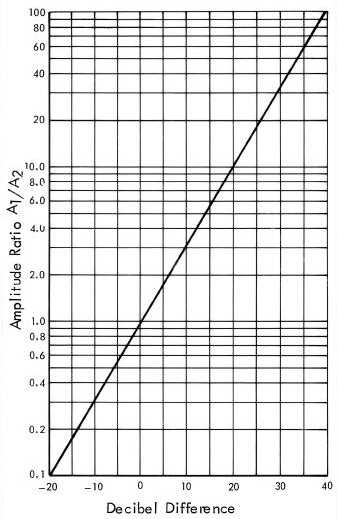T.O. 33B-1-1
5-26
5.2.1.4.3
Receiver Gain Control.
NOTE
The decibel is to express the relationship between two signal amplitudes: Number of
dB = 20log10(A2/A1) where A2 and A1 are the two amplitudes that are being
compared. Thus, dB is proportional to the logarithm (base 10) of the ratio of the
two amplitudes. Figure 5-27 shows the relationship of dB to the amplitude ratio. For
every 6 dB increase in Gain, the amplitude of a signal doubles. Thus, with an 18
dB increase, a signal would have eight times the original amplitude. Conversely,
the signal amplitude is cut in half with a decrease in Gain of 6 dB.
The Gain control is used to adjust the amplitude (height) of signals on the waveform display. Normally a positive
increase in the Gain control will increase the amplitude of the signals. However, on a few instruments the control is
actually an Attenuation control, with which a positive adjustment will decrease the amplitude of the signals. Some
instruments will have both Gain and Attenuation controls. On most instruments the Gain control is calibrated in terms
of the decibel (dB). Where it is not, uncalibrated slide switches or rotary knobs may be used.
Figure 5-27. Decibel-to-Amplitude-Ratio Conversion Chart.

